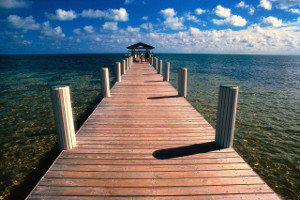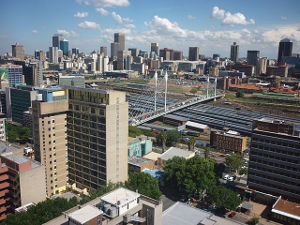Reinsurance: a reluctant market
 |
The billions swallowed up by the 2005 disasters have been quickly recovered, and the business continues to attract investors.
This power to resist shocks is clear evidence that reinsurers have learned to deal with crises. In fact, they owe their survival to their prompt responsiveness. Outstanding remedies to acute aches. Entry to and exit out of the market take place very quickly. Likewise for rates which are submitted to abrupt consecutive rises and falls.
However, this yoyo trend shall not conceal the in-depth mutations affecting the profession.
In fact, reinsurers are no longer the only masters on the scene. With a reduced operational margin, they are henceforth compelled to put up with the financially more powerful large groups of direct insurance on whom they are no longer able to dictate their terms. Moreover, they are required to cope with the new schemes of reinsurance such as securitization which is likely to incur significant falls in premiums volume (transfer of risks on the financial market).
Imposing tough rating terms would inevitably trigger an increase in cedants' retention, which would equally reduce their acceptances.
Being already in an uncomfortable position, reinsurers have also to suffer both the pressure from shareholders who focus on profitability and the threat of rating agencies ready to penalize any abuse.
In short, reinsurers are overwhelmed by doubt. The highly publicized announcement of the 2006 rates increase will be actually confined to some types of risks and markets. All the rest is negotiable.
Top ten global reinsurers in 2004 in billions USD| Company | Net reinsurance written premiums | Growth rate 2003/04 |
|---|---|---|
Munich Re Group | 28.88 | 7.96% |
Swiss Re Group | 25.78 | 10.98% |
Berkshire Hathaway Re Group | 10.58 | -4.29% |
GE Insurance Solutions | 10.13 | 11.56% |
Hannover Re Group | 8.17 | -15.12% |
Lloyd's | 7.65 | 14.18% |
Allianz | 5.57 | 1.46% |
SCOR Re Group | 4.53 | 22.76% |
XL RE | 4.15 | 28.09% |
Converium Group | 3.82 | 7.91% |
The Bermudans: new stakeholders

Being on the scene for only twenty years, the Bermudans are henceforth the insurance business players that must be reckoned with.
Starting out with a special focus on natural catastrophes and liability risks — their favorite niche — they have managed to gradually extend and diversify their technical and geographic sphere of activity to become short-term insurers.
Endowed with substantive equity capital, some have ventured worldwide through the buyout of traditional companies and portfolios. Their first target was Lloyd's with the takeover of several syndicates.
The Bermudans currently control about 25% of Lloyd's capacity.
In Europe, most of takeover activities have been achieved by XL Capital which acquired Le Mans Re, Partner Re which bought out SAFR and Winterthur, and Alea which got hold of Rhine Re.
Main Bermudan reinsurers in 2004
| S & P rating | A.M BEST rating | |
|---|---|---|
ACE Ltd. | A+ | A+ |
XL Capital | AA- | A+ |
Everest | AA- | A+ |
White Mountains | A- | A |
Partner RE | AA- | A+ |
Arch * | - | A |
Axis * | A | A |
Endurance* | A- | A |
Platinum | - | Au |
Renaissance | AA- | A+u |
AWAC* | - | - |
Aspen | A | A |
Alea | A- | A- |
Montpelier * | A- | A |
Max RE | - | A- |
Facultative reinsurance: a growing market
The restrictions such as reduction of capacities, exclusions imposed on the treaties by reinsurers have pushed insurers to place more and more risks on the facultative market. This policy provides reinsurers with the means to better assess their engagements and the accumulations on large risks, especially energy risks that unbalance the treaties.
Withdrawn one by one from the local markets, these risks are getting more attractive to large reinsurers who quote them according to world standards. The growing size of brokers is amplifying this trend towards facultative proportional and non-proportional placement.
Some reinsurers have specialized in excess of loss facultative risks. This type of placement is poised to grow in the future.
Eventually, risks including the terrorism cover are less and less accepted with the exception of the London market and some Bermudan reinsurers who continue to accept this type of cover under some kind of reserve, though.
Reinsurer's bankruptcy, a rare phenomenon
Reinsurers' bankruptcies are very seldom. The few cases reported regard only second class reinsurers. Underwriting and retrocession errors constitute the major causes of these bankruptcies.
The hardships encountered by a reinsurer do not necessarily stand for bankruptcy. When a reinsurer undergoes a crisis, he is generally bought out by another reinsurer who will continue to honor the commitments of his predecessor.
As of September 11, 2001, the rating system by specialized agencies has been generalized. A reinsurer devoid of rating or whose rating is below average has no chance of participating in some risks or of penetrating some markets.
The markets' recent difficulties have pushed rating agencies to revise their ratings downwards.
Despite the decrease in rating, we consider that the solvency of main reinsurers remains very high and that the probability of short-term failure for all of the reinsurers having a rating between AAA and BBB is 0.014% (source: Sigma º 05/2003).
Rating changes since September 11, 2001 for top ten reinsurers
| Standard & Poor's | A M BEST | |||||||
|---|---|---|---|---|---|---|---|---|
| 09/11/2001 | 12/02/2003 | 09/11/2004 | 16/05/2005 | 09/11/2001 | 11/06/2003 | 09/11/2004 | ||
Munich RE Group | AAA | A+ | A+ | A+ | A++ | A+ | A+ | |
Swiss RE Group | AAA | AA | AA | AA | A++ | A+ | A+ | |
GE Insurance Solutions | AAA | A+ | A+ | nd | A++ | A | A | |
Berkshire Hathaway Re Gr. | AAA | AAA | AAA | nd | A++ | A++ | A++ | |
Hannover RE Group | AA+ | AA- | AA- | AA- | A+ | A | A | |
LLOYD'S | A+ | A | A | nd | A | A- | A | |
Allianz RE Group | AA+ | AA- | AA- | nd | AA+ | A+ | A+ | |
SCOR RE Groupe* | AA- | BBB+ | BBB+ | BBB+ | A+ | B++g | B++g | |
Converium Holdings | A+ | A | BBB | BBB+ | A | A | B++g | |
XL RE Group | AA | AA | AA- | AA- | A+ | A+ | A+ | |
Brokers, the come back into favour
Being for a long time rejected by insurers, disliked by reinsurers, brokers have become more and more courted lately.
In a market that is getting tougher, the role of brokers is being reasserted. The direct insurer-reinsurer relationship, potentially litigious, is getting harder and harder to manage, and brokers turn out to be conciliators.
Being mere intermediaries, brokers have ever since become indispensable partners. For some (reinsurers), they make it possible to quickly build the portfolio of their choice, for others (insurers), they contribute with their know-how as regards risks management and their negotiating ability.
The reinsurers' «multi-channel» approach
Large reinsurers have for a long time favoured the direct relationship with insurers. Today, such type of relationship had gone by, either the world's newly ranked number one reinsurer or its eternal rival Munich Re, all reinsurers accept recourse to brokers.
It is the «multi-channel» approach that is being favored. Reinsurers do not think twice before accepting business directly and via brokers, sometimes favoring the latter.
Top ten global brokers in 2004
in USD| Company | Turnover | Country |
|---|---|---|
Aon Re Global | 940 000 000 | USA |
Guy Carpenter & Co. Inc. | 868 000 000 | USA |
Benfield Group Ltd. | 558 331 800 | Great Britain |
Willis Re | 550 000 000 | Great Britain |
Towers Perrin | 146 000 000 | Great Britain |
Jardine Lloyd Thompson Group P.L.C. | 145 173 600 | Great Britain |
Cooper Gay (Holdings) Ltd. | 87 550 000 * | Great Britain |
Gallagher Re ** | 78 000 000 | Great Britain |
BMS Group | 72 951 798 | Great Britain |
Heath Lambert Group | 59 931 675 | Great Britain |
* Fiscal year ending September 30
** Formed in 2004, includes Arthur J. Gallagher Intermediaries (Bermuda) Ltd., Arthur J. Gallagher Intermediaries, Arthur J. Gallagher (UK) Ltd. and John P. Woods Co. Inc.
Africa, a two gear market
Reinsurance in Africa in recent twenty years has been marked by three major events:
- the end of the apartheid in South Africa,
- the economic crisis,
- the emergence of local reinsurers.
South Africa's come back to business
 Johannesburg © Evan Bench, CC BY 2.0 Johannesburg © Evan Bench, CC BY 2.0 |
This return constitutes the highlight of the last twenty years. In 2004, South Africa is the World's insurance market number 16. As far as Asia is concerned, it outranks India (19th), but remains behind Japan and South Korea. As to Europe, South Africa has a premium volume that is higher than that of Russia (23rd), Austria and Sweden.
In 2004, South Africa was the world's number one as regards insurance penetration rate (premium in GDP %).
The arrival of Nelson Mandela to power has triggered the big international reinsurers to transfer their African portfolios to the Johannesburg subsidiaries as was the case for Munich Re, Hannover Re, and Swiss Re which are very active there. The Maghreb, alone, continues to be run from Europe.
The economic crisis
The economic crisis through which Africa is going has marginalized the continent which has been let down gradually. Just a few reinsurers like SCOR continue to develop a sustained activity there from Europe.
In fact, two reinsurance markets coexist in Africa. On the one hand, the countries comprised between south Sahara and South Africa, which can hardly attract anybody, on the other hand the Maghreb and South Africa which continue to attract the large international reinsurers.
The emergence of local reinsurers
The withdrawal of traditional reinsurers has paved the way for regional reinsurers who have managed a successful takeover. Africa Re has methodically developed its market share, thus becoming a major stakeholder on the continent. Following Africa Re's footsteps, other reinsurers like CICA Re, Best Re, Zep-Re,... have sneaked in.
The Middle East: ARIG in pole position
 In the Middle East, the regression of traditional reinsurers is less obvious than in Africa.
In the Middle East, the regression of traditional reinsurers is less obvious than in Africa.
Since its creation in 1980, ARIG has been after a leading position in the region. The Bahrain-based Arab reinsurer is currently one of the Middle East's major player.
Munich Re, Swiss Re, GE Insurance Solutions and Allianz remain ARIG's major competitors in the region.
Arab Re, Best Re, Trust, Kuwait Re are equally present in the region.
The Middle East's new markets
- Islamic Insurance (Takaful) represents an important niche in which a great number of companies are investing. ARIG has just launched its own reinsurance company specialized in this segment: Takaful Re which is due to start its underwriting operations on January 1, 2006.
- Saudi Arabia: Thanks to the new insurance legislation, Saudi Arabia is poised as the biggest insurable potential in the region.
- Dubai stands as the Middle East's future service center.
Main African and Arab reinsurers
in USD
| Reinsurers | Country | 2004 turnover |
|---|---|---|
Munich Re South Africa | South Africa | 370 442 772 |
Swiss Re South Africa | South Africa | 311 797 000 |
Africa Re | Nigeria | 299 067 000 |
SCR | Morocco | 228 127 000 |
ARIG | Bahrain | 131 800 000 |
Best Re | Tunisia | 84 735 600 |
CCR | Algeria | 74 130 494 |
Egypt Re | Egypt | 67 609 230 |
Trust International | Bahrain | 66 500 000 |
Hannover Re South Africa | South Africa | 58 347 986 |
Tunis Re | Tunisia | 37 000 000 |
Arab Re | Lebanon | 29 600 000 |
CICA Re | Togo | 28 822 248 |
Kenya Re | Kenya | 28 289 699 |
ZEP RE | Kenya | 24 300 000 |
Koweït Re | Kuwait | 23 700 000 |
Ghana Re | Ghana | 20 102 150 |
Arab Union Reinsurance | Syria | 17 717 520 |
Sen Re | Senegal | 11 676 063 |
MED Re* | Great Britain | 11 511 000 |
Universe Re | Nigeria | 7 000 002 |
Zim Re | Zimbabwe | 2 680 422 |
* MED Re is an Arab company based in London